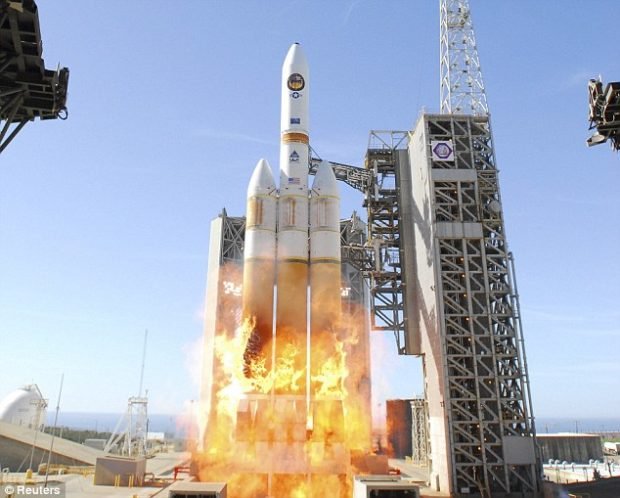Supermassive Black Hole At Our Galaxy’s Center Just Lit Up |

The supermassive black hole at the center of the Milky Way galaxy emitted a bizarre flash of light that scientist cannot explain.
The sudden emission of light occurred on May 13, and was very uncharacteristic of the normal celestial behavior of the black hole, Sagittarius A, at the center of the galaxy, according to Science Alert. It reportedly flashed 75 times brighter than normal over the span of a two-hour observation. , as detailed in a scientific paper published in Astrophysical Journal Letters.
“I was pretty surprised at first and then very excited,” Tuan Do, an astronomer at UCLA told Science Alert.
“The black hole was so bright I at first mistook it for the star S0-2, because I had never seen Sgr A* that bright. Over the next few frames, though, it was clear the source was variable and had to be the black hole. I knew almost right away there was probably something interesting going on with the black hole,” he continued.
Do and his team observed and captured the anomaly at WM Keck Observatory in Hawaii. Do tweeted a time-lapse of two hours of the flash condensed to several seconds.
Here's a timelapse of images over 2.5 hr from May from @keckobservatory of the supermassive black hole Sgr A*. The black hole is always variable, but this was the brightest we've seen in the infrared so far. It was probably even brighter before we started observing that night! pic.twitter.com/MwXioZ7twV
— Tuan Do (@quantumpenguin) August 11, 2019
Current technology cannot detect any radiation that may be emitted by a black hole itself, but scientist can detect radiation coming from the objects adjacent to the black hole produced by extreme friction from the black hole’s strong gravitational forces, according to Science Alert. This radiation, when viewed with infrared telescope technology, appears as bright light.
Do speculates that since the first frame taken during the observation was the black hole’s peak brightness, it could have been even brighter before they began observing it.
There are two possibilities scientist are considering as explanations for the strange brightness. One being that a gas cloud passed within 36 light-hours of the black hole, which would have created the conditions for gravitational friction to produce radiation from the gas cloud.
The other possibility is that when a star approached the black hole last year, it changed the way gases interacted with the black hole, thus changing the black hole’s permanent behavior.
“One of the possibilities is that the star S0-2, when it passed close to the black hole last year, changed the way gas flows into the black hole, and so more gas is falling on it, leading it to become more variable,” Do explained to Science Alert.
Scientists continue to gather more data on the anomalous event so that a solid explanation can be reached.
Content created by The Daily Caller News Foundation is available without charge to any eligible news publisher that can provide a large audience. For licensing opportunities of our original content, please contact licensing@dailycallernewsfoundation.org




